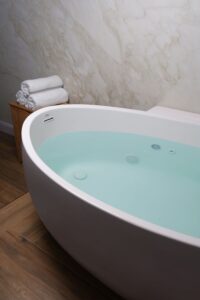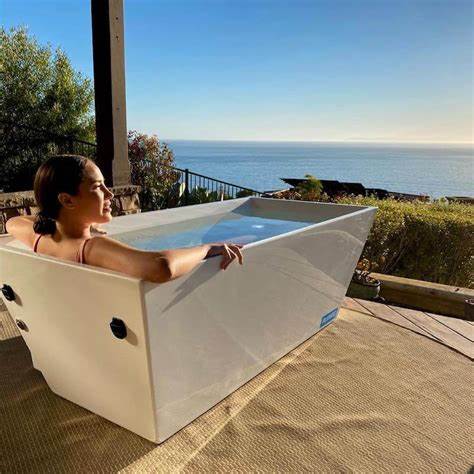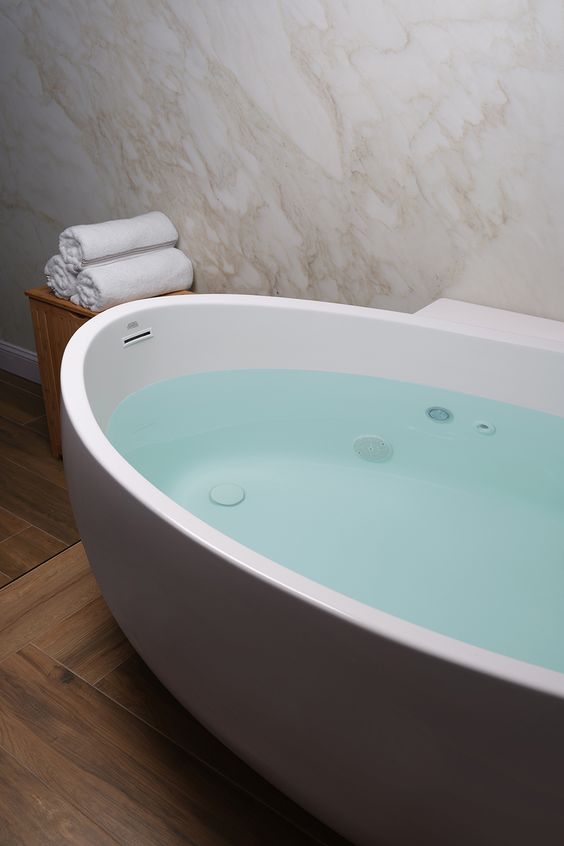Cold water plunges and contrast hydrotherapy are alternative treatments that involve the use of water for pain relief and treatment. In this post, you’ll learn the benefits of cold water and contrast hydrotherapy, the science behind and some tips on how to use them safely and effectively.
The Benefits of Cold Water Plunges and Contrast hydrotherapy
joy of nesting

Contrast Hydrotherapy
Contrast hydrotherapy, also known as hot and cold therapy, is a specific form of hydrotherapy that involves alternating between hot and cold water, either by immersing a body part or the whole body.
The rationale behind this technique is that the sudden changes in temperature stimulate the blood vessels to dilate and constrict, creating a pumping action that improves blood circulation and lymphatic drainage. It reduces inflammation, pain as well as boost’s immune function and metabolism.

Contrast hydrotherapy has been used for various conditions, such as sprains, strains, arthritis, headaches, menstrual cramps, sinus congestion and more. However, the scientific evidence for its effectiveness is limited and inconclusive.
Contrast hydrotherapy is generally safe and easy to perform, but there are some precautions and contraindications to consider. First, you should avoid contrast hydrotherapy if you have a fresh injury that is still hot, swollen or red. Heat may worsen the inflammation.
Using Contrast Hydrotherapy Safely and Effectively
Consult your doctor before starting any new treatment, especially if you have any health issues or concerns.
I like to do 30 seconds of hot, alternating with 30 seconds of cold, 3 times each. But to get maximum results, do 3 minutes of hot water followed by 1 minute of cold.
Repeat the cycle two or three times, depending on your tolerance level.
Always end with cold water as this will close your pores and prevent heat loss.
Also, monitor your response and adjust your times accordingly.
Cold Plunges
Cold plunges are a form of cold-water immersion. This practice involves exposing most of your body to cold water.
They can be done in various ways, such as using a bathtub, a barrel, a tank or a natural body of cold water. The water temperature is typically between 50- and 60-degrees Fahrenheit, and the duration can range from one to 10 minutes, depending on your level of health.
Some of the potential benefits of cold plunges are:
- Reducing muscle soreness and inflammation: Cold plunges may help ease the pain and swelling that occur after intense exercise or injury, by constricting the blood vessels and reducing blood flow to the affected area.
- Enhancing athletic performance: Cold plunges may help improve the performance of athletes, especially in endurance events, by lowering the core body temperature and preventing overheating.
- Boosting immune function: Cold plunges may help stimulate the immune system, by activating the sympathetic nervous system and releasing hormones such as adrenaline and cortisol.
- Improving mood and mental health: Cold plunges may help improve mood and mental health, by triggering the release of endorphins and serotonin, which are neurotransmitters that regulate emotions and happiness.
- Promoting longevity and wellness: Cold plunges may help promote longevity and wellness, by activating the hormesis response, which is a beneficial adaptation to a mild stressor.
Cold Plunge Risks and Limitations
- Hypothermia: Cold plunges may cause hypothermia, which is a dangerous condition where the body temperature drops below 95 degrees Fahrenheit.
- Cardiovascular stress: Cold plunges may cause cardiovascular stress, which is a strain on the heart and blood vessels.
- Immune system overload: Cold plunges may cause immune system overload, which is an excessive or inappropriate activation of the immune system.
- Lack of evidence: Cold plunges may lack evidence, which is a solid and consistent scientific support for their effectiveness and safety.
Therefore, cold plunges should be done with caution and common sense. And only after consulting your doctor and following their advice. Start with a mild temperature difference and a short duration and gradually increase them as you get used to them. End with cold water, dry yourself thoroughly and dress warmly after a cold plunge.
You should always monitor your response and adjust accordingly. Stop immediately if you feel discomfort or adverse effects.
Download Your Free Gift
To get started on a home where you feel healthy, happy and connected grab my complimentary design and wellness download, The Wellness Home.
It’s the prettiest little book. It’s a quick read with super easy design solutions that help you lead a beautiful, healthier lifestyle at home, plus my 3-to-5 Things Framework that gives you step by step actions to get started and stay on track.
That’s it for today. Thank you for stopping by!
Shiree’
What is Wellness Design? Learn more about the connection between your wellbeing and your home, featured on Deirdre Fitzpatrick’s Dying to Ask Podcast. And if you’d like to dive deeper into this topic, check out my blog post, “Hiring an Interior Designer”.

